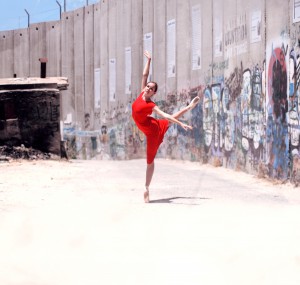As a classically trained ballet dancer, teacher, scholar, and the Founder/Artistic Director of Inside Out Contemporary Ballet, a professional dance company in the San Francisco Bay Area, I am increasingly aware of how far removed dance is from the every day life of a typical American. In America, unless you are an aspiring young dance student or a professional dancer, most of us have little to no interaction with dance beyond the occasional Zumba class, going to the club, watching “So You Think You Can Dance on TV,” or enjoying Beyoncé’s latest music video. More often than not, we have little to no engagement with dance as an important cultural phenomena that merits scholarly investigation, or as a vital, life affirming art. But why should we care about dance? Why does dance matter? What can it offer us beyond entertainment value or physical fitness? How can it connect us to ourselves and to others? To strangers, to foreigners? To nature? And why, in a world filled with illness, injustice, and poverty, should we invest our time and resources into daily dance practice and performance?
These questions are the motivation behind my Fulbright project entitled “If I Were You.” If I Were You – Project Israel is the second iteration of a long-term international outreach project that enlists the personal experiences and voices of global citizens to illuminate how dance can connect us to our shared humanity. My biggest piece of advice for any aspiring Fulbrighter is to be prepared to change your plans and remember that your work will continue well beyond your Fulbright experience. I admit that after a year of studying, teaching, and choreographing dance in Israel and the West Bank, I have more questions than I have answers. And yet, in spite of all the surprises, disappointments, and stones left unturned, I am a Fulbright alumna who is convinced that dance matters. And it matters, because I have witnessed, time and time again, the inherent ability of dance to expose that which is most personal to us, and also that which is most universal: the motivating rhythms of pain, desire, and love. Dance has the ability to illuminate our shared humanity in a wordless way, and to connect us to the very movement that makes anything alive.
In Israel and the West Bank, I was able to make friends with people who I have almost nothing in common with because we share a passion for rhythmic bodily movement; for the feelings that dance gives us, and for the ways that dance makes our lives matter. I am able to see them as living breathing individuals capable of creation and destruction just like I am. And in that acknowledgment comes a sense of mutual understanding: we are all people doing our best with the tools we have available to survive on this planet at this moment in time. And that in and of itself is reason enough to share in the healing joy of dance.


4 Comments
POWERFUL ARTICLE CASEY…!!!!
Maxine M Browne
Fulbright Alumna…and DANCE IS MY PASSION TOO!!!!!!
Dear Casey,
Thank you for sharing your story. As a dance instructor teaching Dance Appreciation, I am finding students are seeking to learn and experience various cultural dances. Not only is the dancing fun, but it is a means to which students from various backgrounds can connect to one another.
Beautiful!!
Beautiful. Yes, dance is the universal language that can heal, connect and empower. I am so inspired by this work!!!